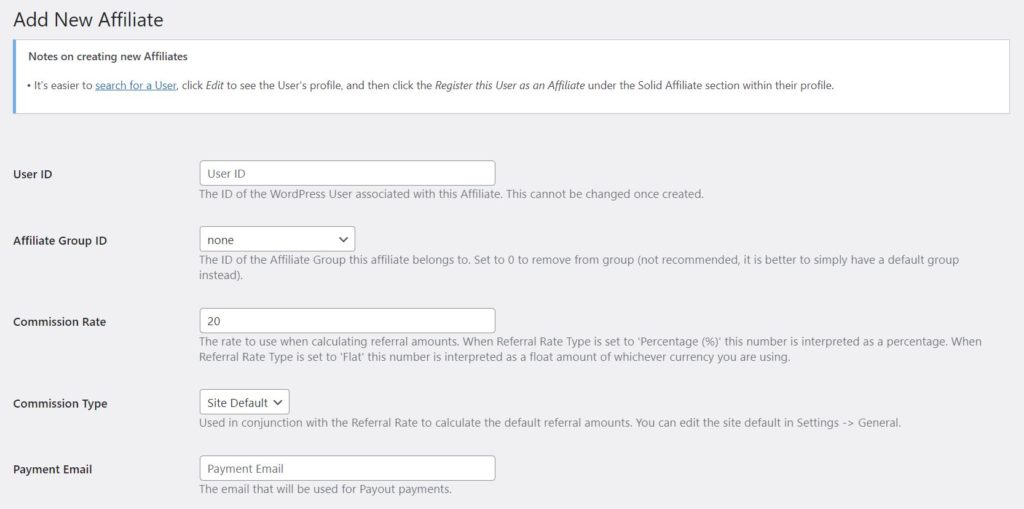Running a WordPress affiliate program can be a profitable venture for your business. However, there are many technical aspects to consider. Between setting up affiliate links, tracking them, and paying your partners, you may start to feel a little overwhelmed.
Fortunately, choosing the right WordPress affiliate plugin can simplify the process. By selecting a tool that has a user-friendly interface and customizable settings, you can quickly overcome any technical challenges within your program.
In this article, we’ll briefly discuss why you should consider running a WordPress affiliate program. Then, we’ll explore five of the most common technical challenges you might face and how to address them. Let’s get started!
Why You Should Consider Running a WordPress Affiliate Program
A WordPress affiliate program is a partnership between you and online marketers. These third-party advertisers promote your products and services through affiliate links. Whenever customers make purchases through these URLs, the publishers earn commissions on the sales.
Using an affiliate program is a low-cost marketing strategy. You only need to pay your marketers for their successful sales. As such, the program can be a more affordable alternative to traditional advertising methods.
Furthermore, affiliate programs enable you to access new audiences. Your partners will promote your products and services to their readers and followers. Therefore, you might be able to reach more people than with other advertising methods.
Finally, using affiliate marketing can help enhance your Search Engine Optimization (SEO). Your partners will be using inbound links that drive traffic to your website. This means that search engines such as Google may look more favorably upon your site.
5 Technical Challenges to Running a WordPress Affiliate Program
There are multiple technical challenges involved in a WordPress affiliate program. In this section, we’ll look at five of the most common ones.
To overcome any technical issues, we recommend carefully choosing the right WordPress affiliate plugin for your needs. The ideal tool will enable you to set up different rules for your affiliates, communicate with them, and view detailed data.
In this tutorial, we’ll show you how to overcome technical challenges with the Solid Affiliate plugin.
1. Generating Affiliate Links
Setting up affiliate links is one of the essential parts of running your program. Without these personalized URLs, you won’t be able to see where traffic and sales are coming from. You also won’t be able to pay your affiliates their commissions.
You’ll need to designate links for each of your products. These URLs also need identifiers that are linked to your affiliate partners’ accounts.
Fortunately, it’s pretty easy to create affiliate links using a WordPress affiliate plugin. Your tool should have a dedicated dashboard area for adding affiliates:
You should also have the option to create affiliate links manually. Alternatively, if you’re using a plugin such as Solid Affiliate, the program might automatically generate the URLs for you.
Then, your affiliates can access their links through their affiliate portal. As such, you won’t need to spend much effort to create these dedicated URLs.
2. Offering Multiple Commission Tiers
Commission tiers are essential for running a successful WordPress affiliate program. These structures establish how much money your partners will make on their sales.
Offering a set percentage or payout on sales is pretty straightforward. You can also choose to exclude shipping and tax amounts from commissions:
However, you might also like to offer multiple commission tiers. In this setup, affiliates will make base amounts based on their sales. Furthermore, there is a second layer of payouts. Marketers who referred other affiliate advertisers will make a percentage of their sales, too. This structure is referred to as Multi-Level Marketing (MLM).
There are advantages to using this model. Active affiliates can quickly recruit more members to your program. You’ll make more money overall and your marketers will be incentivized to find new people to promote your products.
In this setup, you’ll need to assign the new sign-ups to their recruiters within your database. You’ll also need to decide what percentage your recruiters will make on their referral sales.
3. Keeping Track of Sales
Making sales is arguably the most important part of running a WordPress affiliate program. Unless customers are purchasing through referral links, neither you nor your marketers will make any money from the strategy.
However, it isn’t enough to simply make sales. You’ll also need a way to track this data. Otherwise, you won’t be able to monitor your best-performing products and adjust your marketing strategy accordingly.
Ideally, your WordPress affiliate plugin will have a dedicated area for sales data. It should include both visual graphs and list-based information:
Moreover, sales data can help you identify the highest-performing affiliate marketers in your program. You might like to reward them with higher commission payouts or free products. In addition, you could use their marketing strategies as examples to help lower-performing affiliates.
4. Paying Affiliate Partners
Affiliates won’t work for you out of the goodness of their hearts. Just as your business needs money to run, your marketers require regular payments to keep operating within your program.
However, it can be challenging to pay your partners. If you have multiple affiliates all over the world, it would be impractical to pay them via traditional means. For example, if you used simple bank transfers, you’d likely end up confused and paying a lot in transfer fees.
Instead, you should consider using a WordPress affiliate plugin that integrates with payment solutions such as PayPal:
Using this integration, you’ll be able to perform bulk payouts to your affiliate marketers. You can also take advantage of the low transaction fees and multiple currency options available with PayPal.
5. Communicating With Affiliate Partners
It might be tempting to invite affiliate partners into your program, give them access to links, and leave them to their own devices. However, this strategy could be harmful to your program in the long term.
For example, you’ll likely want to educate your affiliates about your business and products. You might even upload marketing materials for your partners to use. By doing this, you can create a consistent brand image and help your marketers to sell:
Furthermore, you might need to communicate with your affiliates about new product developments or their performance. You might even want to set up automated messages when your marketers make successful sales.
As such, it’s essential that you choose a plugin with an integrated affiliate portal. Here, your marketers will receive messages specific to your program. Otherwise, you’ll have to send a flurry of emails that could get lost in a larger inbox.
Conclusion
Running a WordPress affiliate program can generate profits and expose your business to new audiences. However, you’ll need to choose a WordPress affiliate plugin that can help you overcome any technical challenges that arise.
To recap, these are five of the most common technical challenges to running a WordPress affiliate program:
- Generating affiliate links.
- Offering multiple commission tiers.
- Keeping track of sales.
- Paying affiliate partners.
- Communicating with affiliate partners.
Do you have any questions about overcoming technical challenges when running a WordPress affiliate program? Let us know in the comments section below!
















